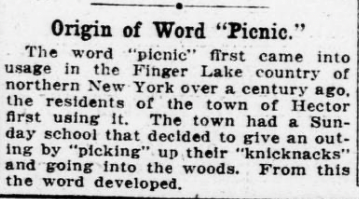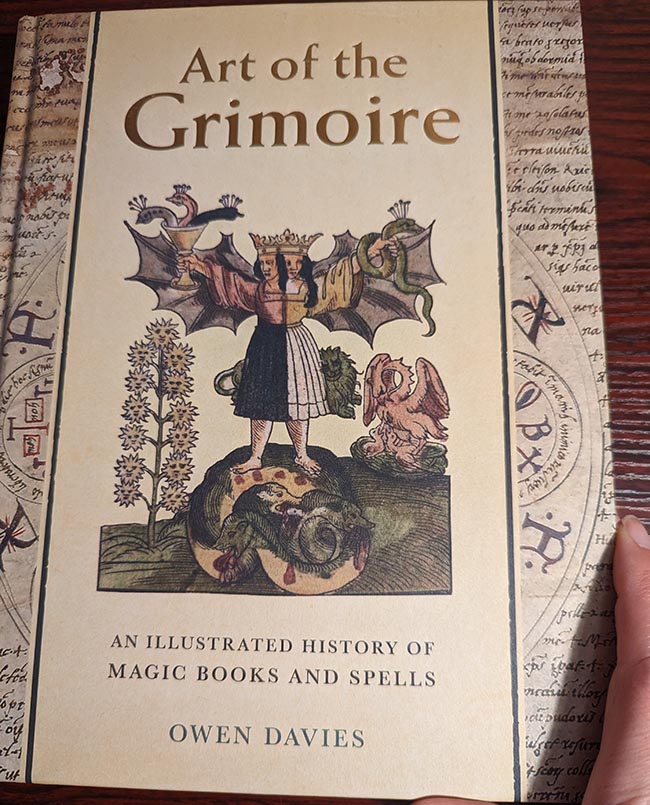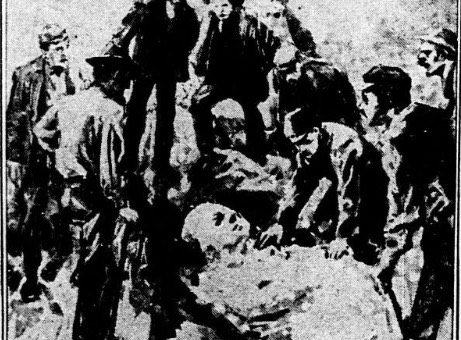
American history is full of hoaxes, but the great hoax ever in the United States was the Cardiff giant hoax.
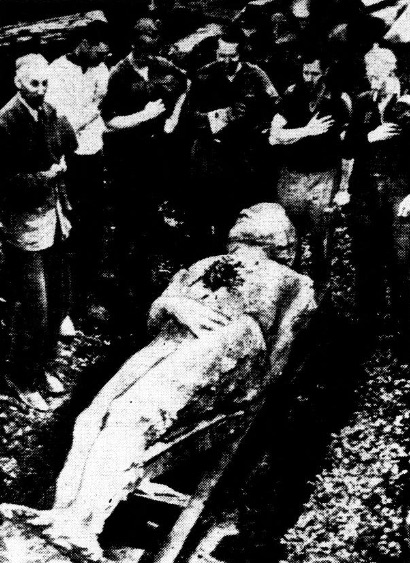
Discovery
According to old newspaper accounts, the Cardiff giant was “discovered” by W.C. Newell, a farmer, near Cardiff, New York. Newell and his workers were busy digging a well on his farm when, on October 16, 1869, they uncovered a stone giant buried roughly five feet below the surface of the ground.
“The giant had seemingly become petrified through remaining buried for long centuries underground with a subterranean stream flowing about it. The body was seen to have changed into limestone. Yet the bluish veins were still visible, and tiny pores covered the hardened flesh.” [1]
People Come to See
The giant measured 10 feet and 4.5 inches and the discovery created quite a sensation. People from across the country traveled to Cardiff to see the sleeping giant.
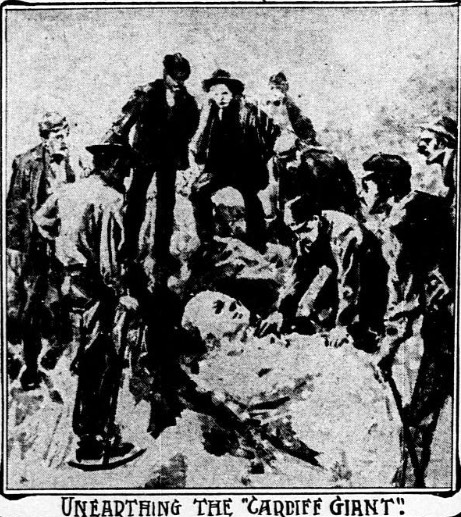
It was examined by numerous scholars and doctors who believed in its authenticity. Dr. Andrew D. White wrote:
“A few mornings after the discovery, my brother and I, in a light buggy drawn by a fast trotter, were speeding through the valley to the scene of the discovery. As we went we saw more and more, on every side, evidences of an enormous popular interest. The roads were crowded with buggies, carriages, and even omnibuses from the city of Syracuse, and with lumber wagons from the farms. In about two hours we arrived at the Newell place, and found a gathering which at first seemed like a county fair. In the midst was a tent and a crowd was pressing for admission. Entering, we saw a large pit or grave, and at the bottom of it, perhaps five feet below the surface, an enormous figure, apparently of Onondaga gray limestone. It was a stout giant with massive features, the whole body nude, the limbs contracted as if in agony. It had a color as if it had lain long in the earth, and over its surface were minute punctures like pores. A special appearance of awe was given it by deep grooves and channels on its underside, apparently worn by the water, which was flowing in streams through the earth and along the rock on which the figure rested. Lying in its grave, with a subdued light from the roof of the tent falling upon it, and with the limbs contorted as it in a death struggle, it produced a most weird effect. An air of great solemnity pervaded the place. Visitors hardly spoke a whisper.” [2]
Some of the scholars and scientists argued over whether it was a petrified giant or if it was an ancient statue. Some people believed that the Jesuits buried it so that it might be discovered as proof that biblical stories were true.
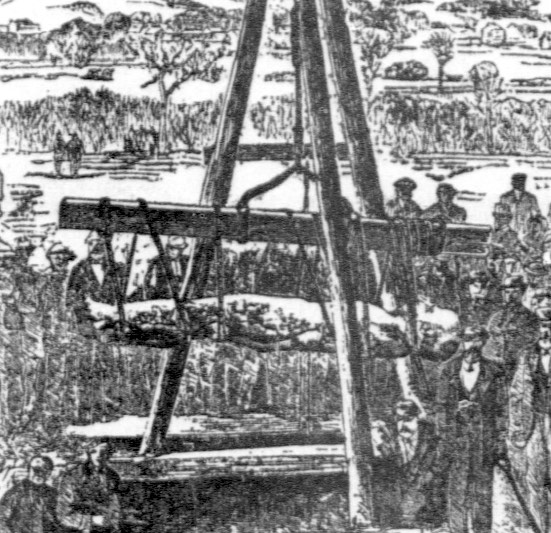
British and German scientists soon got word about this great discovery and came to the United States to check out the giant’s remains.
Spawned More Giants
The giant was imitated and many more of fake giants were made simply because people could not get enough of them.
P.T. Barnum had offered to buy the Cardiff giant for $150,000. His offer was rejected, so Barnum had several fake giants made out of paper mâché and had them placed for exhibition in different cities across the U.S.. Barnum claimed that each of the Cardiff giants were the “real” thing.
Fake Exposed
The giant was eventually lifted from its grave and exhibited in numerous cities, but the lavish attention to the giant brought about its demise.
It was Professor Marsh, a paleontologist, and other men of science, who eventually debunked the great giant. “It is of very recent origin and the most decided humbug,” said Prof. Marsh.
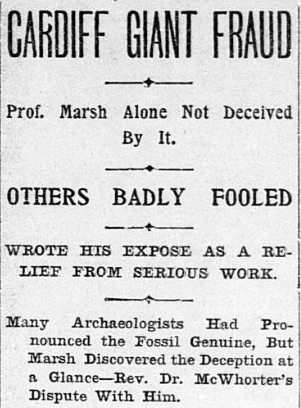
After people began to agree that the giant was a fake, word began to spread about how the giant was made and placed on the farm in New York state. Witnesses came forward who remembered seeing a large crate being brought to Cardiff. Everyone and their uncle claimed to have had some part in the creation of the statue and newspapers were full of different stories from different men, all claiming that part of the hoax idea was their own.
How it was Made
George Hull then admitted that he had first conceived of the giant in 1867 while visiting friends in Baraboo, Wisconsin. A year later, he bought an acre of land in a gypsum quarry and had men cut out a large block of gypsum for his hoax. He then spent the next 20 days hauling the 10,000 pound block of gypsum to the railway station.
The block of stone was shipped to E. Burghardt, a marble and stone cutter, in Chicago. Once the block was in place inside a barn, two German sculptors, Edward Salle and George Markham, began turning the stone into a giant. After two months, the giant sculpture was finished.

To give the giant a look of authenticity, Hull used a wet sponge filled with sand to obliterate all the markings from the chisels. This gave the giant a water worn appearance.
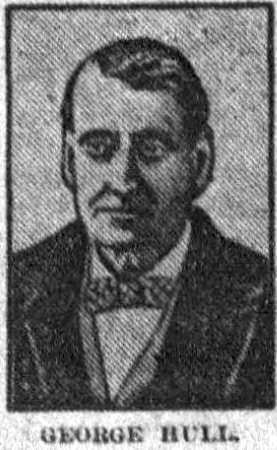
Next, steel needles and a mallet were used to give the giant a pitted look. It was then stained with sulphuric acid (some reports say coffee was used) to age its coloring. Finally, the giant was shipped and hauled to Newell’s farm – William C. Newell was the nephew of Hull’s wife – where it was buried underground and “discovered” by Newell a year later.
What Happened to the Cardiff Giant
After the stone giant was formally labeled a hoax, it was reported that the statue was packed away and “lying neglected and forgotten in a barnyard near Fitchburg.” [3]
In 1948 the Cardiff giant was sold to the Farmers’ Museum of the State Historical Association in Cooperstown, NY. It is still on display today.

